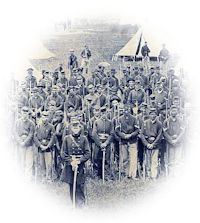November 11th, 1864.
I have gratified a long-cherished wish today—that of visiting the outer fortifications in our front. I wish some of my Northern friends, who are disposed to growl because the army does not “move forward,” had been with me. The questions they ask would have answered themselves, for, in looking at our works, they would have seen a counterpart of the Rebels’. First, a continuous chain of rifle pits, or breastworks, running from Appomattox River, on our right, to our extreme left, where it turns a half circle back, in our rear, toward City Point. These works are built of pine logs laid up as high as a man’s head, and firmly joined together. On the side facing the enemy a ditch is cut, about eight feet from the logs, the dirt being thrown up against them and firmly packed, forming a protection against solid shot, and shell unless they burst directly overhead. In front of these works, from a quarter to a half mile, the timber is “slashed,” rendering it next to impossible for men to make their way through it, even if not opposed. Much of the way the breastworks are protected by abbattis. A ditch is dug some three feet deep, from four to six rods in front of the line of breastworks, then the tops of trees are inserted in the ditch closely packed together, every limb sharpened and projecting toward the enemy, and the dirt is then thrown back and packed, to hold them firmly in place. But this is the weakest point of the line of defense.
All along this extended line, at every angle, forts are built, mounting twelve to thirty guns. These forts are within musket range of each other, so situated as to sweep the intervening space with grape and canister.
This is a very faint and imperfect description, but is, I think, enough to show that mortal man cannot carry these works, if earnestly defended. The Rebel works are quite as strong as ours.
I had several fine views of them through a field glass, which annihilated distance, so far as vision is concerned. Half way between the two lines are the pickets, but a few rods apart.



